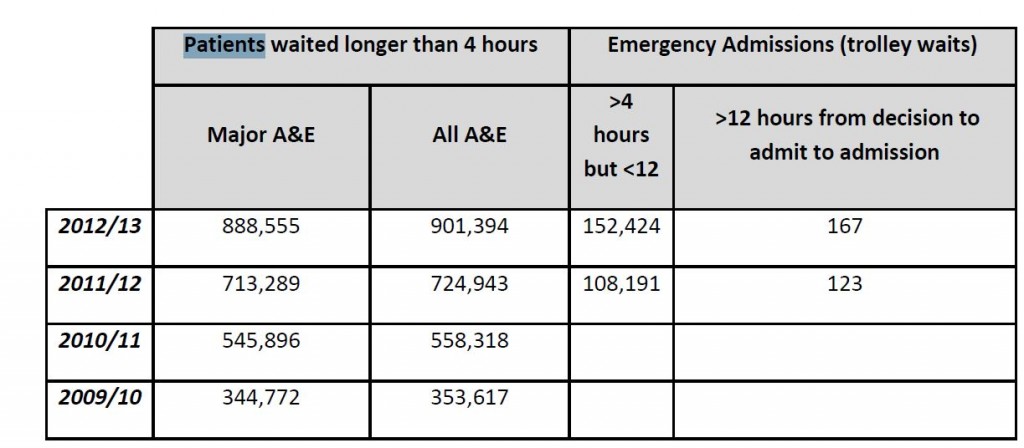This is Labour Party NHS Check 9 originally published by Labour’s Shadow Health Team in 2013
Cameron’s NHS: Hospitals ‘full to bursting’
REVEALED: Hospitals across England too full and patient care put at risk
Official NHS figures for winter 2012/13 show that:
- Every hospital trust in England operated above recommended safe occupancy levels on a least one day last winter.
- Almost four in five hospitals filled all standard beds at one point over the winter
- Half of hospitals filled all standard and extra beds on at least one day – not a single bed available to new patients.
Hospitals have standard ‘core’ beds and use additional ‘escalation’ beds according to demand. During the winter months the Department of Health publishes data on 159 hospital trusts, in Weekly Situation Reports, on bed occupancy levels.
All 159 hospital trusts operated above the recommended safe 85% occupancy at least once over winter. The ‘Dr Foster’ NHS performance watchdog, half Government-owned, warned that above this level quality of care can deteriorate.
The Dr Foster Hospital Guide 2012 said:
“When occupancy rates rise above 85% it can start to affect the quality of care provided to patients and the orderly running of the hospital.”2
In addition:
- More than half of hospital trusts (86) operated at an average rate of over 95% occupancy
- 78 trusts have experienced at least one day where there were no beds available at all
- 27 trusts experienced 10 or more days with no standard or core beds available
Crisis in England’s A&Es
The NHS faced the worst winter in nearly a decade. At every stage of a patient’s journey, waiting times are getting longer. Patients have to wait longer for an ambulance to arrive; patients have to wait longer in ambulances, outside A&Es; patients have to wait longer in A&E before being treated; patients have to wait longer on trolleys before being admitted.
The number of patients waiting longer than four hours in A&E is almost three times higher than in Labour’s last year in office and an extra 161,890 patients waited for more than 4 hours in the last 6 months, compared with the same period last year.
 There are increasing reports of long waits in A&E departments, with some patients waiting more than 12 hours to be admitted.
There are increasing reports of long waits in A&E departments, with some patients waiting more than 12 hours to be admitted.
“Waiting times are routinely reaching 12 hours in parts of the country, while “queue nurses” have been appointed in others to watch over patients brought in by ambulance until doctors become available.
Official figures submitted by NHS trusts to the Department of Health show that 27,247 patients spent longer than four hours in an emergency department in the week ending March 17, compared with 13,200 in the same week last year.
Telegraph, 24 April 2013
Earlier this month the Norfolk and Norwich University Hospital set up a major incident tent outside its A&E as ambulances queued up outside
“A major incident tent had to be set up outside a Norfolk hospital because ambulances were left to queue outside the A&E department for hours. The mobile treatment area was set up at the Norfolk and Norwich University Hospital after 15 ambulances had to queue up on Monday. The East of England Ambulance Service said each vehicle had to wait for up to three hours to hand over patients. The hospital said demand at the A&E department had been high.
BBC News, 2 April 2013
Low staffing levels
According to the Care Quality Commission, more than 1 in 10 hospitals are operating below safe staffing levels:
“CQC also saw some improvement in staffing levels. However, this was from a low base and the providers still have some way to go. Hospital services met the standard in 89% of inspections.
Care Quality Commission, Care Update Issue 2, March 2013, p. 17
